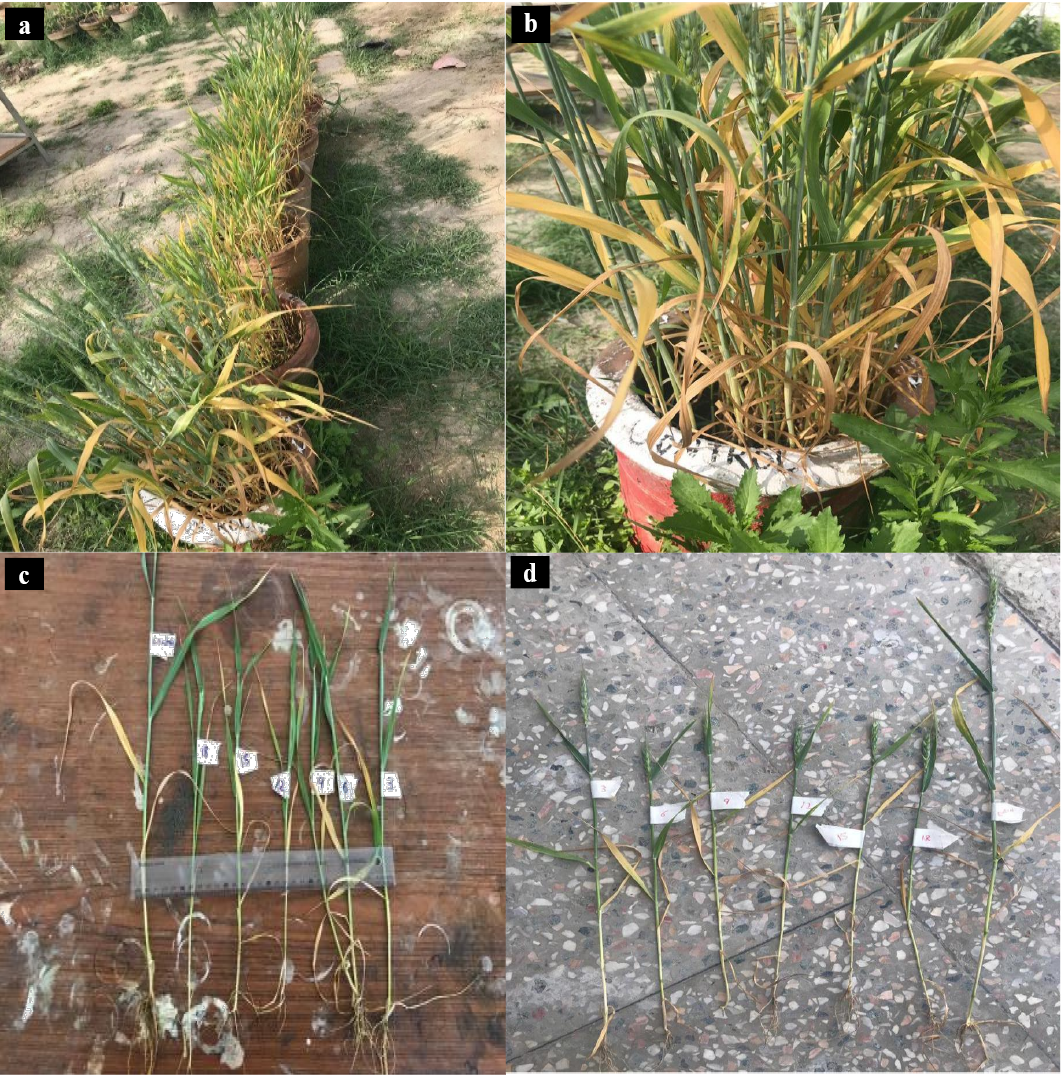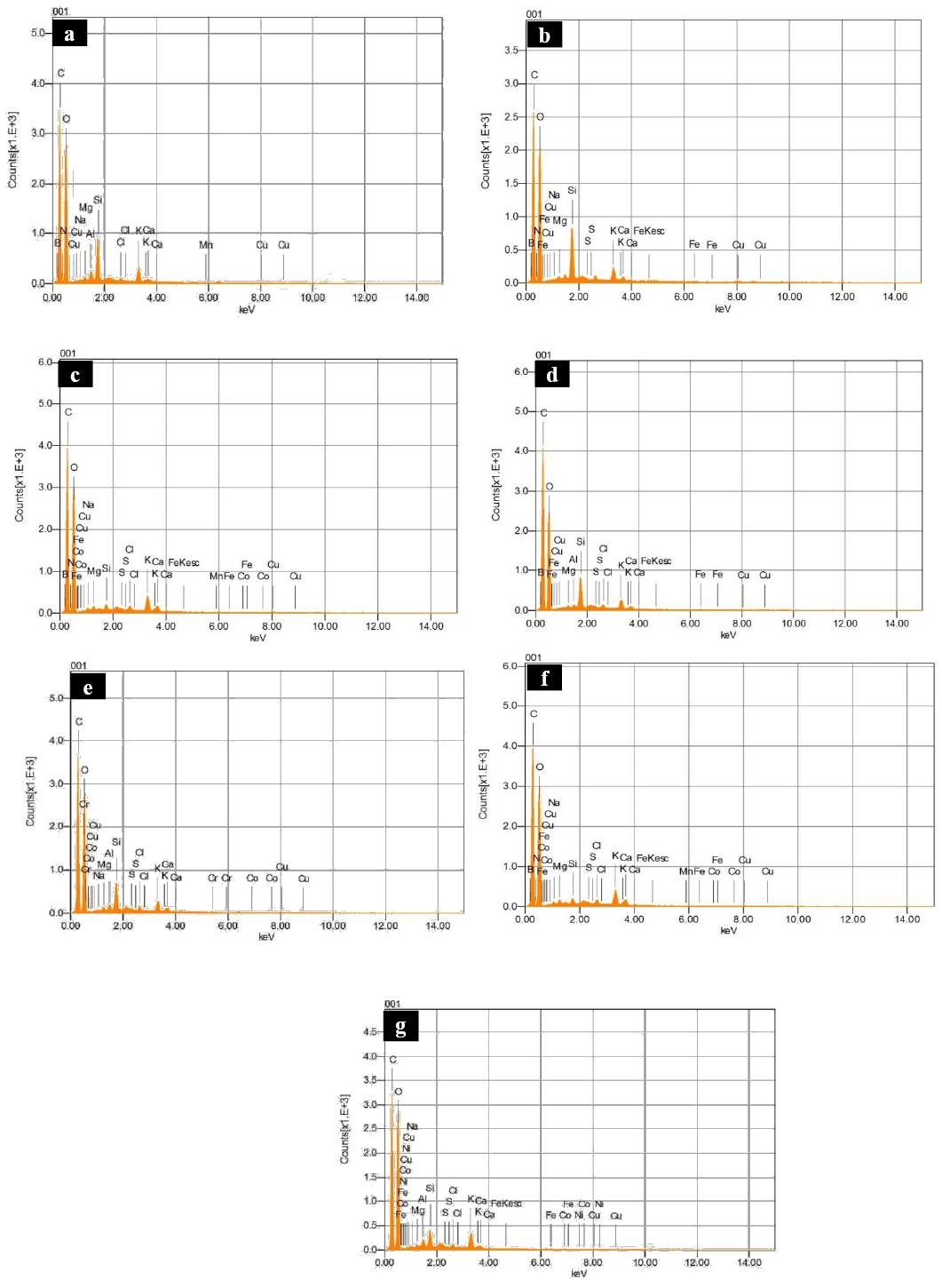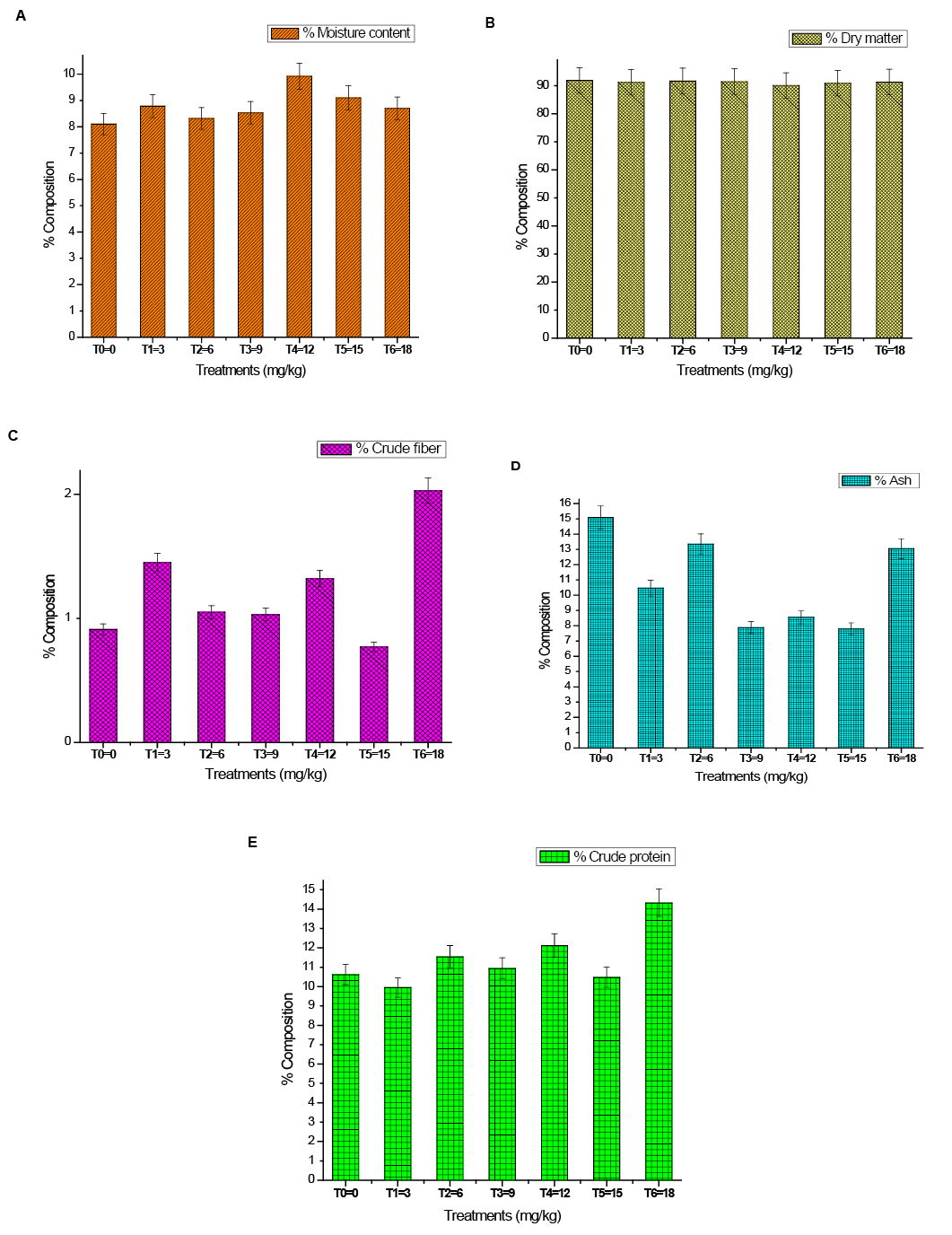Proximate Composition and Minerals Content of Wheat (Triticum aestivum L.) Under Boric Acid Stress via Energy-Dispersive X-Ray (EDX) Fluorescence Based Analysis
Proximate Composition and Minerals Content of Wheat (Triticum aestivum L.) Under Boric Acid Stress via Energy-Dispersive X-Ray (EDX) Fluorescence Based Analysis
Muhammad Adnan1*, Muhammad Nauman Khan2,3, Barkat Ullah2, Faisal Zaman2, Alevcan Kaplan4, Hubert O. Dossou-Yovo5, Sajid Ali Khan Bangash6, Sana Wahab7, Mehreen Ghazal8 and Muhammad Hassan Sarfraz9
Plants affected under B stress. (a-b) General view of plants under B stress, (c) Measurement and observations of different plants under B stress at vegetative stage, (d) Observations of different plants under B stress at reproductive/ fruiting stage.
Different amount of elements detecting in wheat under B stress at (a) T0=0 mg/kg H3BO3; (b) T1=3 mg/kg H3BO3; (c) T2=6 mg/kg H3BO3; (d) T3=9 mg/kg H3BO3; (e) T4=12 mg/kg H3BO3; (f) T5=15 mg/kg H3BO3; (g) T6=18 mg/kg H3BO3.
Different amount of nutrients detecting in wheat under B stress at different treatments (A) % Moisture content, (B) % Dry matter yield, (C) % Crude fiber, (D) % Ash, (E) % Crude protein.
Map showing the location of the study area circled in red.













